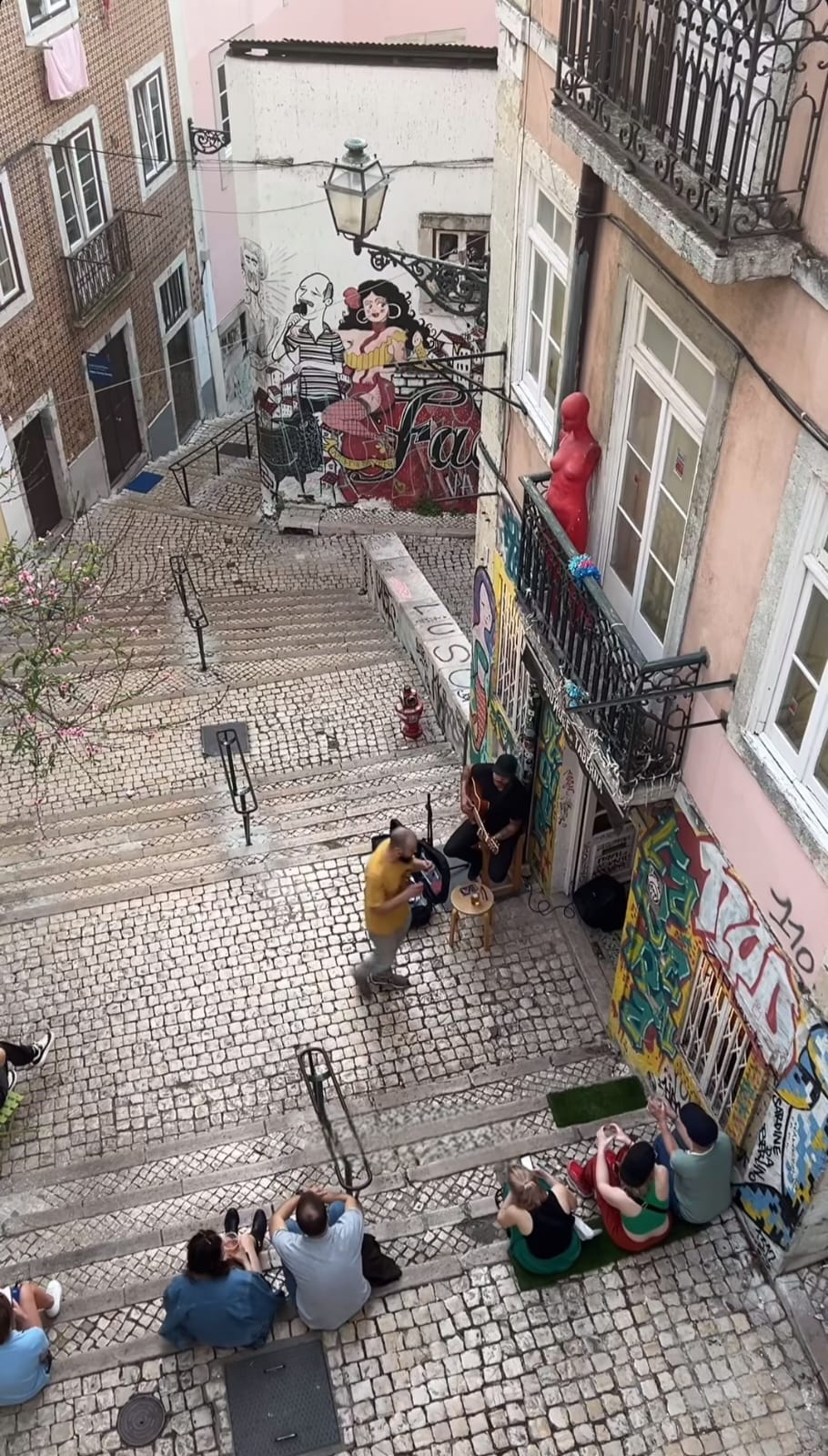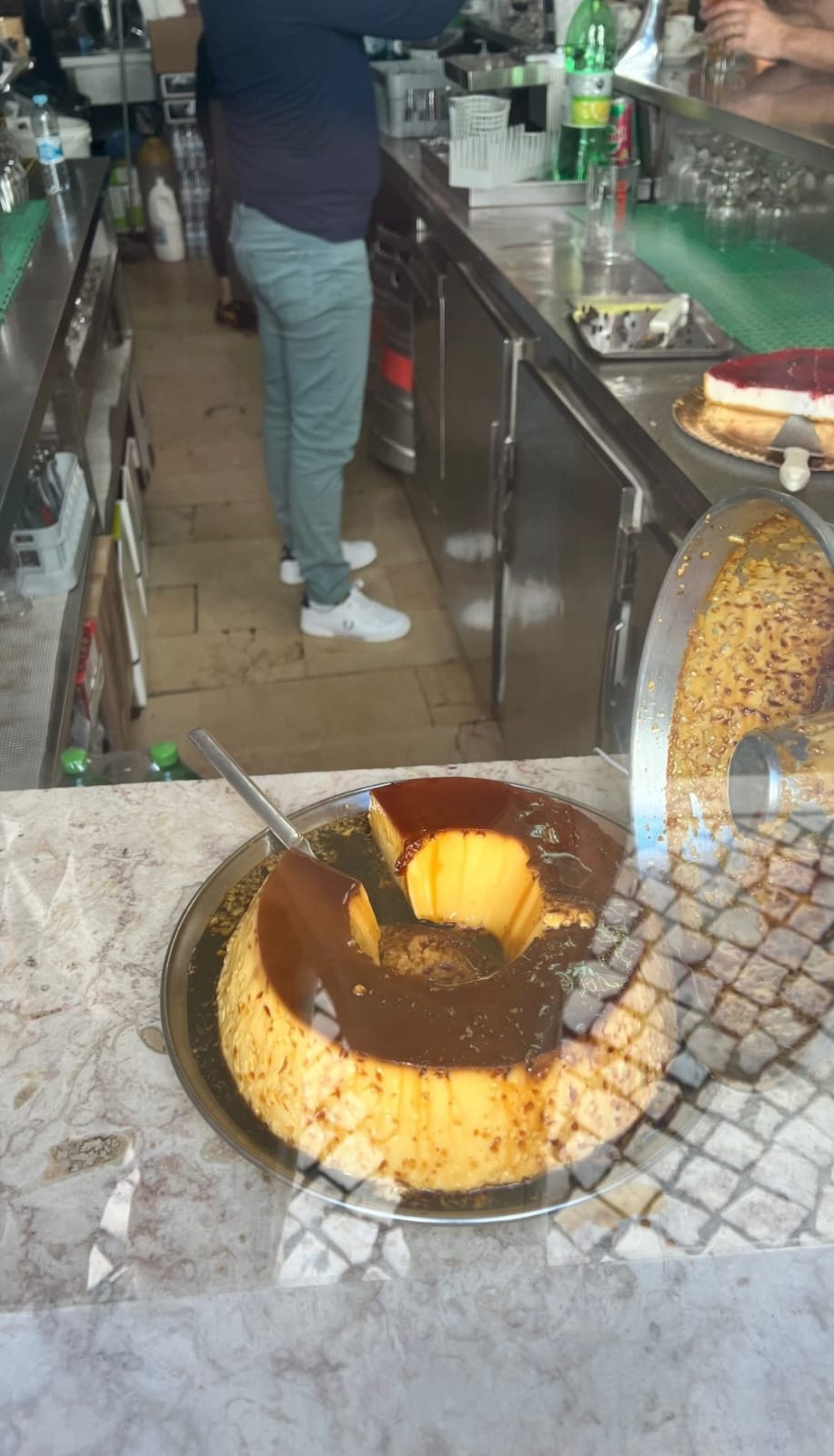
Lisbon, second part {EN/ES}Lisboa, Segunda parte

This is a second edition of Bilbao because yesterday's just fell short and we really toured a lot of places with the kids there. One of the places they took us to visit was The staircases of São Cristóvão em Alfama. These staircases are really an emblem of the city. Fado is present in every corner: in the particular walk of fame of the most important fado singers, in Rua do Capelão; in a colorful graffiti on the São Cristovão Stairs and in Severa's house itself, marked with a plaque and transformed into a cozy restaurant. There are no showy monuments here, but to enter Mouraria is to find the most genuine Lisbon, among narrow streets with buildings dressed with tiles, balconies with flowers and always, always, the fado.
Mouraria, along with Alfama, is another of the most traditional neighborhoods, steeped in history and music, as the name suggests, has its origins in an Arab quarter. When D. Afonso Henriques, the first king of Portugal, conquered the capital from the Muslims, he confined them to this small area. Today it is still one of the most multicultural neighborhoods. Entering here is a tale with a 21st century smell.

Alfama and its tourists, large terraces full of tables and overlooking a sea of red roofs; and Mouraria, so authentic that makes you want to stay and chat with the ladies who go shopping and hang their clothes in the windows. Because here the clothes are always dried in the street, in plain sight; no matter if it is on the first floor or on the sixth floor.

For me, Lisbon is a place to stay and live. We confirmed it once again when we enjoyed the umpteenth panoramic view of the city, from the top of the Castle of St. George, a Muslim fortress that defended the ancient Arab citadel with its wide stone walls and huge towers. And once again as we descended and wandered the seductive, uneven alleys of Mouraria and sat down to dinner on an open-air terrace, by the light of ancient lanterns and to the cadence of a live fado sung.



The amount of bars and resto's in the city is impressive. Bars, resto, tapas, cafes, sandwiches and everything to sit and eat on the go. Its similarity that denotes its dyes in our nearby land Brazil is impressively strong. There are many details besides the language that make them family no matter how much they don't want to. Although to be honest I don't know if they rant or not about their roots. But the truth is that they are everywhere. And although it does not have the same rhythm as the Brazilians. I think it is a beauty worthy of visiting this beautiful city.


SPANISH VERSION (click here!)

Esta es una segunda edición de Bilbao porque la de ayer solo me quedaba corta y realmente recorrimos muchos lugares con los chicos allí. Uno de los lugares que nos llevaron a visitar fue Las escalares de São Cristóvão em Alfama. Estas escalinatas son realmente un emblema de la ciudad. El fado está presente en cada rincón: en el particular paseo de la fama de los fadistas más importantes, en Rua do Capelão; en un colorido graffiti en las Escaleras de São Cristovão y en la misma casa de Severa, señalada con una placa y transformada en un acogedor restaurante. Aquí no hay vistosos monumentos, pero adentrarse en Mouraria es encontrarse con la Lisboa más genuina, entre callejuelas estrechas con edificios vestidos con azulejos, balcones con florecillas y siempre, siempre, el fado.
Mouraria junto con Alfama, es otro de los barrios más castizos, impregnado de historia y música.Como el nombre indica, tiene su origen en un barrio árabe. Cuando D. Afonso Henriques, el primer rey de Portugal, conquistó la capital a los musulmanes, les confinó a esta pequeña zona. A día de hoy sigue siendo uno de los barrios más multiculturales. Entrar acá es un cuento con olor a siglo XXI.

Alfama y sus turistas, grandes terrazas repletas de mesas y vistas a un mar de techos rojos; y Mouraria, tan auténtico que dan ganas de quedarse a vivir y charlar con las señoras que van a hacer las compras y cuelgan la ropa en las ventanas. Porque aquí la ropa se seca siempre en la calle, a la vista; sin importar que sea en planta baja o en el sexto piso.

Para mí, Lisboa es para quedarse a vivir. Lo confirmamos una vez más cuando disfrutamos de la enésima panorámica de la ciudad, desde la cima del Castillo de San Jorge, una fortaleza musulmana que defendía la antigua ciudadela árabe con sus anchos muros de piedra y sus enormes torres. Y una vez más al bajar y recorrer las seductores callejuelas en desnivel de Mouraria y sentarnos a cenar en una terraza al aire libre, a la luz de antiguos faroles y con la cadencia de un fado cantado en vivo.



La cantidad de bares y resto que hay por la ciudad es impresionante. Bares, resto, tapas, cafés, sándwiches y todo para sentarse como para comer al paso. Su similitud que denota sus tintes en nuestra tierra cercana Brasil es impresionantemente fuerte. Hay muchos detalles además del idioma que los hacen familia por más que no quieran. Aunque siendo sincero no sé si ellos despotrican o no de sus raíces. Pero lo cierto es que están por todos lados. Y aunque no tiene el mismo ritmo que los brasileños. Creo que es una belleza digna de visitar esta preciosa ciudad.













Comments